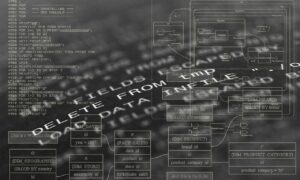Across the country, more associations are shifting to self-management to control costs and keep decisions close to home. Volunteers step up because they care about their neighborhoods, only to discover that financial oversight, reporting, and coordination require more time and structure than expected. Without systems, the learning curve is steep and mistakes carry real consequences for budgets and trust. The good news is that modern tools now make professional-level administration possible for small boards.
Digital platforms centralize records, automate routine tasks, and create clear audit trails, helping volunteers lead with confidence. The goal is not to replace human judgment; it is to support it with reliable processes. With the right setup, a board can simplify complex workflows, answer questions faster, and spend more time on strategy rather than spreadsheets. In short, software has become essential infrastructure for self-managed communities that want to operate smoothly and transparently.
Why HOA Finances Are the First Thing to Spiral
Money touches everything in a community, from landscaping to insurance, which is why financial tasks become stressful so quickly. Dues collection, budgeting, monthly reporting, and vendor payments leave little room for error and demand consistency over many months. Many boards do not include CPAs, and even basic accounting competence varies, so small mistakes can snowball into late fees, unhappy vendors, or compliance issues. Early habits matter.
Establishing structured workflows for invoicing, reconciliations, and reporting reduces risk and protects relationships with homeowners. Clear processes make it easier to track obligations, forecast reserves, and communicate decisions to residents in plain language. When HOA finances are predictable and visible, the rest of the board’s work becomes far easier because time is no longer spent hunting for receipts or reconciling conflicting spreadsheets; it is spent planning and improving the community.
Manual Methods Are Failing Volunteer Boards
Many associations still rely on Excel workbooks, paper invoices, and generic accounting templates not designed for community associations. These tools struggle with shared-dues allocations, special assessments, and the kind of resident-facing transparency boards require. Files live on personal laptops, approvals happen in email, and the exact numbers get reentered in multiple places. The result is version confusion and a fragile audit trail.
Research on self managed HOA finances highlights how manual methods increase error risk and administrative burden, especially as communities grow. Volunteers are capable, but the system around them must be dependable and centralized. When it is not, duplicated invoices, missing receipts, and delayed communications become common. Over time, the pressure erodes morale and pushes capable people to step away from service. Modernizing the toolkit is not a luxury; it is a practical step that protects continuity and trust.
How Software Solves the Finance Puzzle
Modern HOA software replaces fragmented workflows with one connected financial system. Payment portals give homeowners convenient options, including autopay and ACH, which improve on-time collections and reduce manual follow-up. Automatic billing schedules and late-fee rules apply policy consistently, while reminders reduce friction and confusion. Under the hood, ledger-based accounting records every transaction with audit-ready logs, so treasurers, auditors, and future board members can understand what happened and when.
Monthly board packets no longer require heroic effort. Customizable reporting compiles income statements, balance sheets, budget-to-actual reports, and aging reports in minutes, with filters that let you drill into a single line item or export the full report for review. Because transactions, documents, and communications are linked, it is simple to trace an invoice from approval to payment and view supporting contracts, notes, and email history. Bank reconciliation connects directly to accounts, reducing errors from manual entry and keeping balances aligned with reality.
Permissions and role-based access control protect sensitive data while allowing committees, CPAs, or vendors to see only what they need. Templates standardize recurring tasks such as assessment notices, delinquency letters, and year-end summaries. This setup eliminates repetitive administrative work and builds confidence in financial oversight. Volunteers spend less time reconciling spreadsheets and more time answering resident questions, prioritizing projects, and planning ahead. The result is a calmer, more predictable finance cycle that supports better decisions and healthier reserves.
Managing Vendors and Expenses Without the Chaos
Vendor management is another common pain point for self-managed boards. Untracked invoices, unclear scopes, and forgotten due dates produce avoidable disputes and service interruptions. Centralized digital storage changes the equation. Contracts, insurance certificates, and past invoices live in one secure place, searchable by vendor or category. Scheduled payments and approval workflows keep obligations on time and visible to the entire board. Notes and attachments travel with each record, so future volunteers understand decisions without digging through old emails.
When a new treasurer steps in, they inherit a system rather than someone’s unsearchable spreadsheet, which preserves continuity and strengthens relationships with long-term partners.
Self-Managed Doesn’t Mean Unstructured
Moving to software is more than a technology upgrade; it is a shift to disciplined, repeatable governance. Many boards now adopt a digital-first model that blends volunteer leadership with automation and on-demand services. This “digital property management” approach keeps control local while reducing manual labor and compliance risk.
Smaller communities like self managed condo HOAs can thrive with a clear system for dues, documents, and communication. The goal is to build a lean, reliable framework that any incoming board can run confidently, rather than to mimic a full-service firm. Templates, role-based permissions, and shared dashboards provide structure without adding bureaucracy. Over time, the platform becomes institutional memory, making transitions smooth and preserving the hard-won knowledge of the community.

How Boards Can Reclaim Time and Transparency
Consider a board that decides to centralize operations mid-year. Within one billing cycle, autopay and clear reminders increase on-time payments. Monthly reports are now in minutes instead of hours, and the treasurer can answer questions with a few clicks. Homeowners can log in to view payment history, current balances, and upcoming meetings, reducing back-and-forth emails. Maintenance requests are trackable, from submission to completion, with updates visible to the resident and the board. Transparency improves relationships. Fewer surprises mean fewer frustrations, and the board regains the time and focus needed for improvements that residents notice.
Still Wondering If It’s the Right Fit?
It is understandable that, even with these clear benefits for a self managed HOA, hesitations are normal. Boards worry about learning curves, data migration, and whether the change will stick. The reality is that most modern HOA platforms are built specifically for non-experts and include guided onboarding, sample templates, and responsive support. Training typically takes hours, not months, and the payoff is immediate: fewer manual tasks and cleaner records, which solidifies the confidence of the volunteer leadership.
Finance Simplicity Isn’t Optional
Financial mismanagement undermines trust faster than any other issue, which is why predictable, transparent workflows are essential for self-managed associations. Communities that invest in a central system do more than save time. They create a fair, consistent process that outlasts any one volunteer and makes the work more rewarding. Digital tools provide scalable solutions for small and mid-sized associations that want independence without sacrificing quality or accountability. Start with the financial backbone, then extend to vendors, documents, and communication. With a clear framework and modern software, your board can move from reactive to proactive and lead with clarity.



































